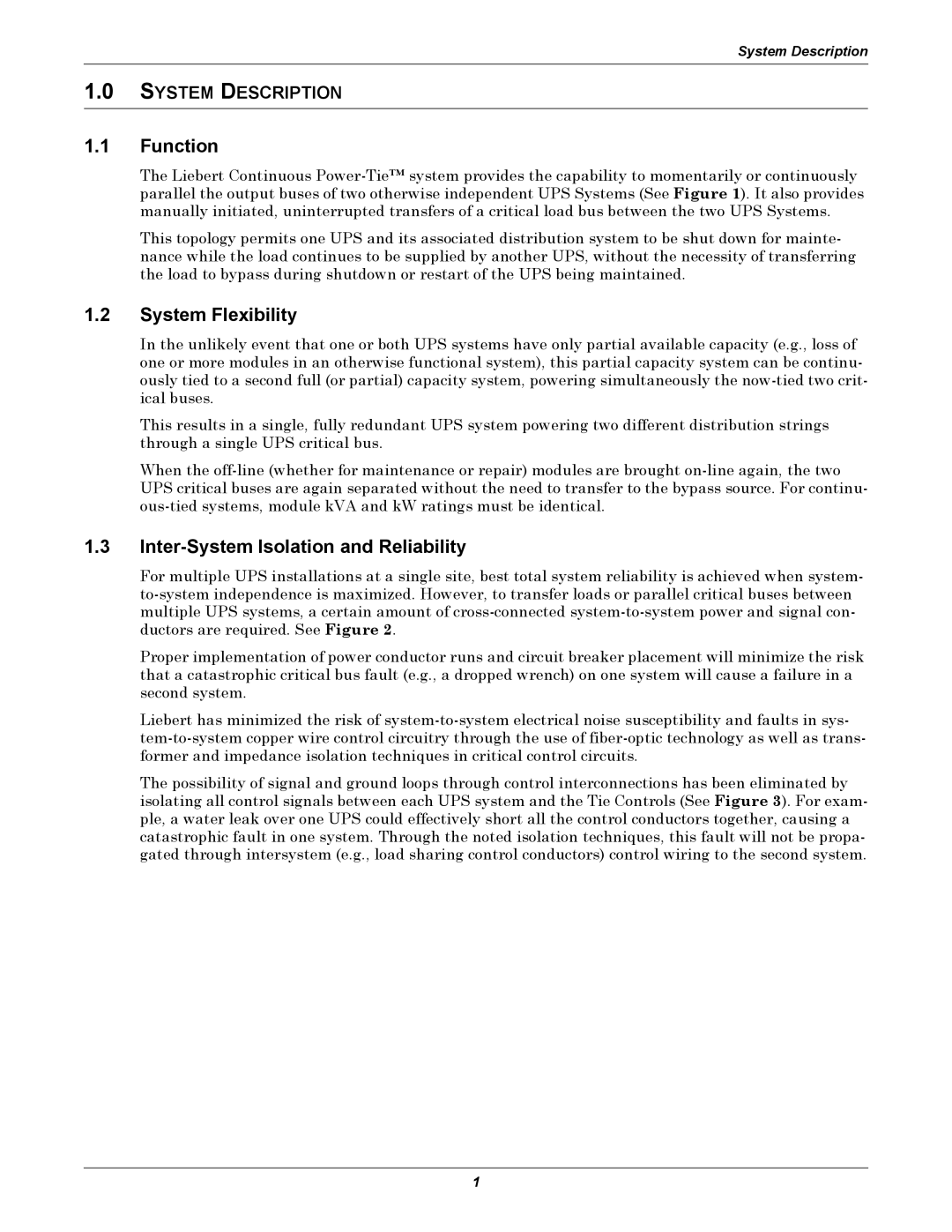
System Description
1.0SYSTEM DESCRIPTION
1.1Function
The Liebert Continuous
This topology permits one UPS and its associated distribution system to be shut down for mainte- nance while the load continues to be supplied by another UPS, without the necessity of transferring the load to bypass during shutdown or restart of the UPS being maintained.
1.2System Flexibility
In the unlikely event that one or both UPS systems have only partial available capacity (e.g., loss of one or more modules in an otherwise functional system), this partial capacity system can be continu- ously tied to a second full (or partial) capacity system, powering simultaneously the
This results in a single, fully redundant UPS system powering two different distribution strings through a single UPS critical bus.
When the
1.3Inter-System Isolation and Reliability
For multiple UPS installations at a single site, best total system reliability is achieved when system-
Proper implementation of power conductor runs and circuit breaker placement will minimize the risk that a catastrophic critical bus fault (e.g., a dropped wrench) on one system will cause a failure in a second system.
Liebert has minimized the risk of
The possibility of signal and ground loops through control interconnections has been eliminated by isolating all control signals between each UPS system and the Tie Controls (See Figure 3). For exam- ple, a water leak over one UPS could effectively short all the control conductors together, causing a catastrophic fault in one system. Through the noted isolation techniques, this fault will not be propa- gated through intersystem (e.g., load sharing control conductors) control wiring to the second system.
1
